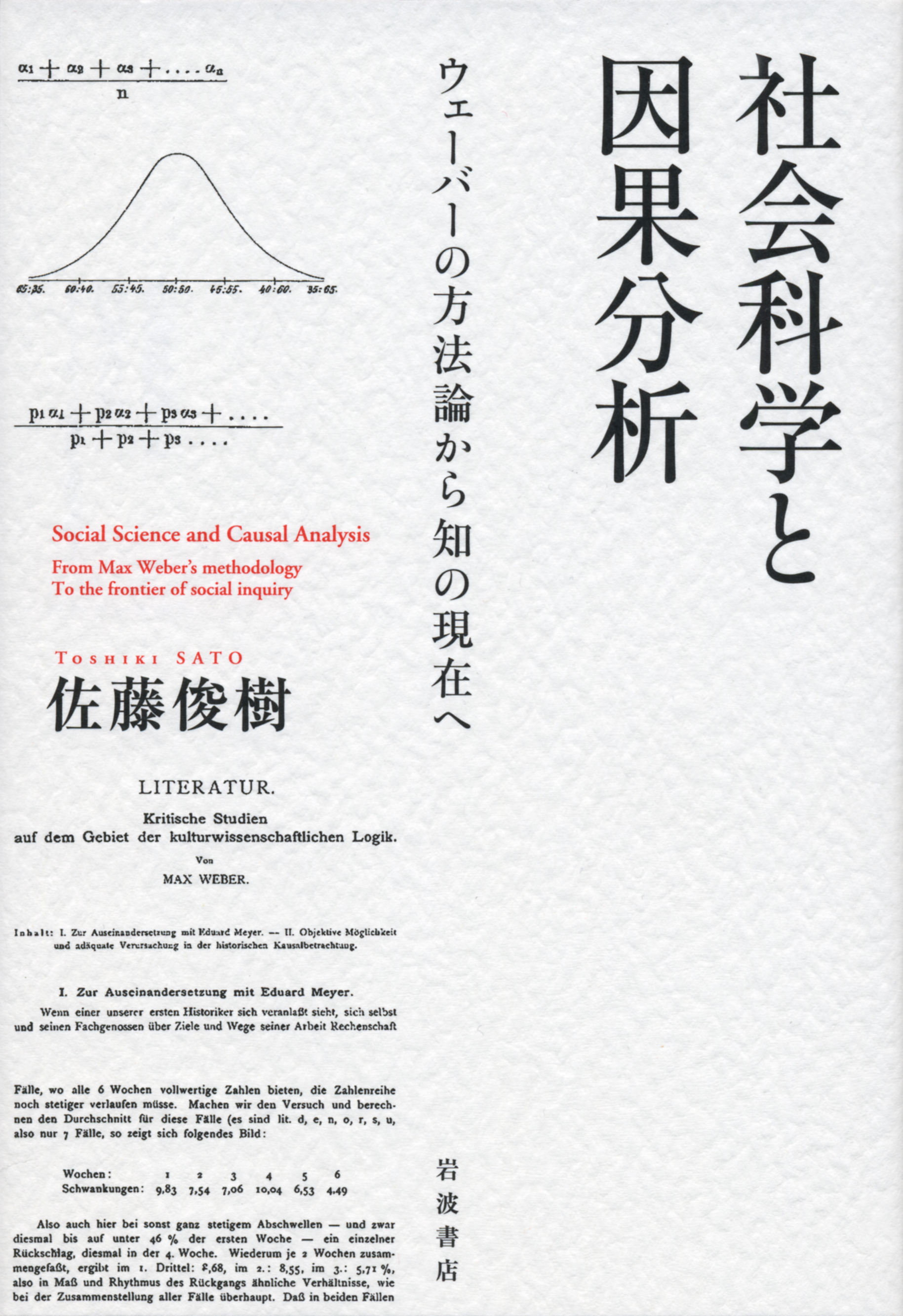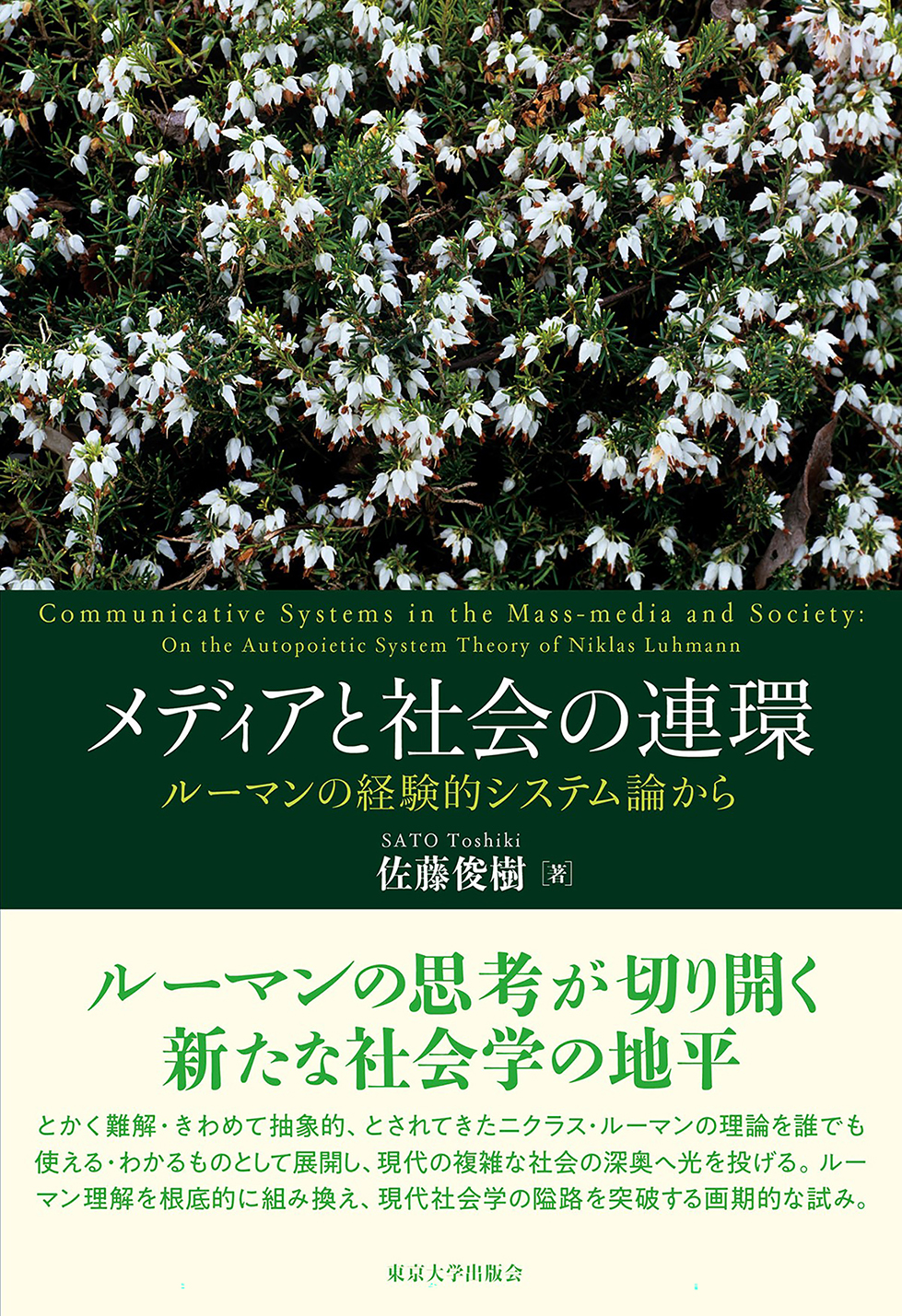
Title
Shakai-Kagaku to Inga-Bunseki (Social Science and Causal Analysis - From Weber’s methodology to the front-line science of deduction)
Size
438 pages, 127x188mm, hardcover
Language
Japanese
Released
January 29, 2019
ISBN
9784000613156
Published by
Iwanami Shoten
Book Info
See Book Availability at Library
Japanese Page
This book reconstructs the establishment process that the social sciences underwent from the late 19th to early 20th century by focusing on the methodology known as “adequate causation.” Through the description of the process, this book demonstrates that 1) adequate causation is the same as today’s statistical causal inference and 2) the social sciences fundamentally share the same methodology—a uniqueness that differentiates them from the humanities and the natural sciences.
The social sciences have been developing knowledge and collecting vast amounts of data specifically to increase the well-being of humanity. For example, they have been judging undesirable states in society, such as inequalities of opportunity, through statistics and research, specifying the causes to resolve social issues.
Identifying those causes is crucial. Let us refer to an undesirable social state as X. Theoretically (considering the situation), several factors underlie state X. We cannot simply pick up one factor (let us refer to it as Y) and identify Y as the cause of X; that is not correct. This is because there are other possible causes. There may be, for example, another factor—let us say a “factor Z”—that exists even before Y and produces Y, which leads to state X (Z -> Y -> X), or one in which both X and Y are triggered by Z (Z -> Y and Z -> X). In both cases, X will not be resolved even if Y is eliminated from the situation. Even in the first scenario, Y will reappear if Z is not eliminated.
Two solutions for identifying the cause were proposed in 19th-century social science. The first solution (A) was to discover a general rule, speculatively, that would make X appear, similar to the approach used in the natural sciences. This is referred to as a nomothetic approach, although in fact any general rule proposal has been disproved. On the other hand, scholars who leaned more toward the humanities proposed solution (B): ascertaining the cause by observing the phenomenon individually. This solution was referred to as an idiographic approach. The problem was that there were no means available to verify whether Y was truly the cause of X.
While the two approaches were subject to fierce debate, a third standpoint emerged. If, for example, X did not appear if Y did not exist, then Y could be the cause of X. For this reason, (C): if there are two cases in which all else is equal except the existence of Y, and the case in which Y exists is the only one that sees the appearance of X, that is, the case without Y does not see X occurring, then Y can be determined as the cause of X. This approach was first proposed by John Stuart Mill as a scientific methodology and improved by the German biologist and statistician Johannes von Kries. Kries proposed it as a deterministic method. He stated, “Even if all the other factors involved with X are unknown, there are several case examples in which everything is the same except for the existence of Y. If the ratio in which X occurs in a case example with Y is p1, and the ratio in which X occurs in a case example without Y is p2, then Y is the cause that triggers X, with the probability of p1−p2.” This methodology was named “adequate causation.”
The concept of adequate causation was introduced to jurisprudence by Gustav Radbruch and to social science by Max Weber, both in the early 20th century. This concept is the same as causal inference in statistics, which is currently spreading into the medical and health sciences as well. Causal inference for statistics is based on counterfactual and probabilistic causation theories, and as explained above, adequate causation is also based on these two concepts. Although a state in which (C) can be completely satisfied is actually rare, causal inference usually takes the form of deduction, which relies on many hypotheses. At this point, social science—as a science that involves many hypothetical deductions—shares issues in common with other sciences, such as how to deduce from statistical findings, how to judge the limitation of methods for adapting to the real world, how to include first-order observations, and how to deal with decision-making in public policy. Thus, an interdisciplinary approach is especially effective.
(Written by SATO Toshiki, Professor, Graduate School of Arts and Sciences / 2019)
Table of Contents
Chapter 2: A 100-Year Spiral
Chapter 3: Methodology of Adequate Causation
Chapter 4: Historical Comparison
Chapter 5: Observing Society and Causal Analysis



 Find a book
Find a book



